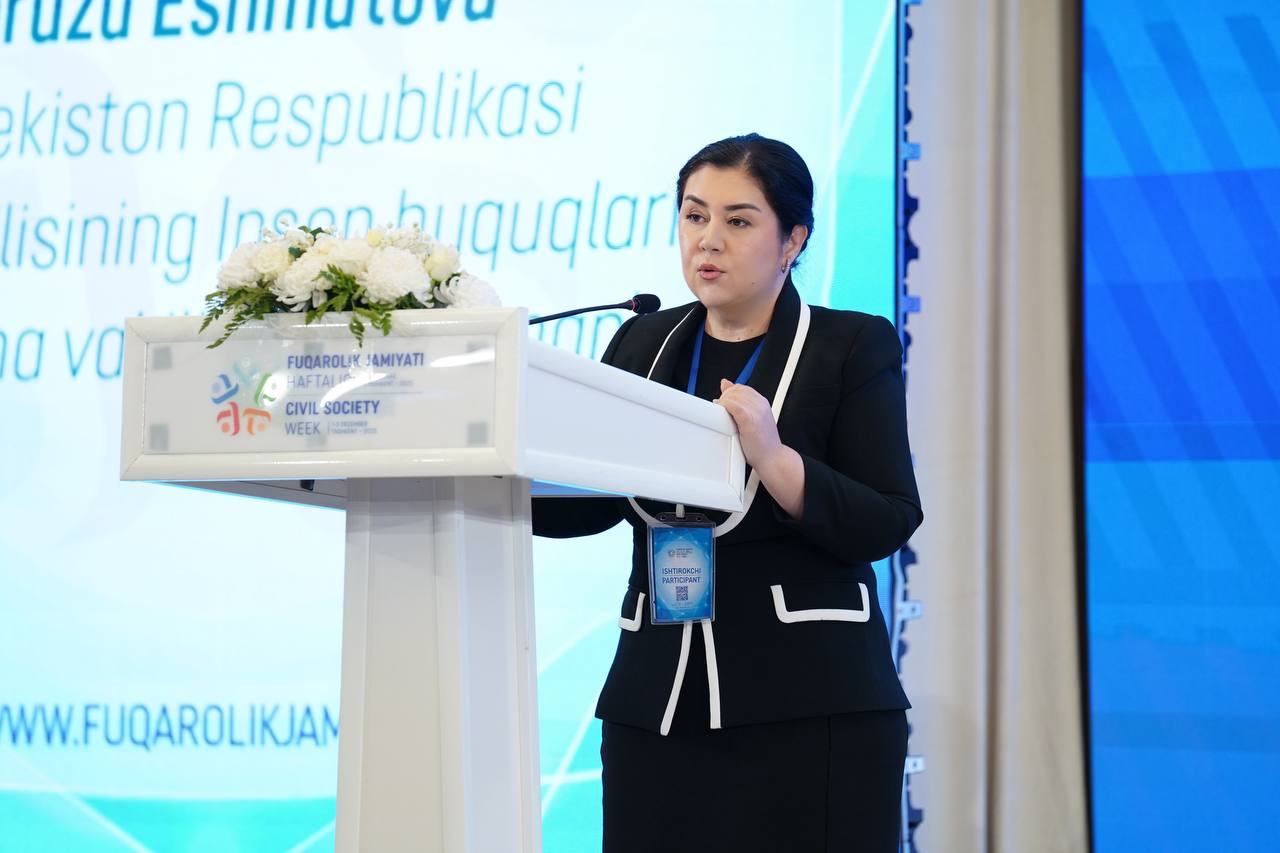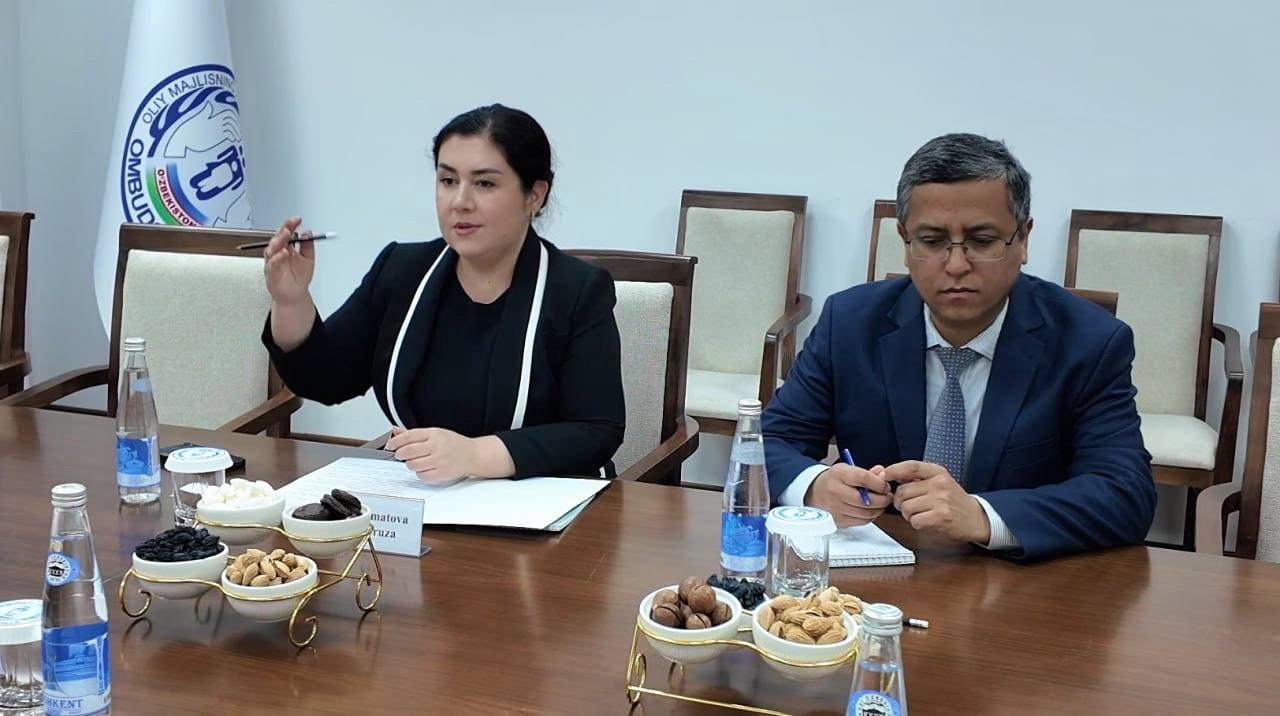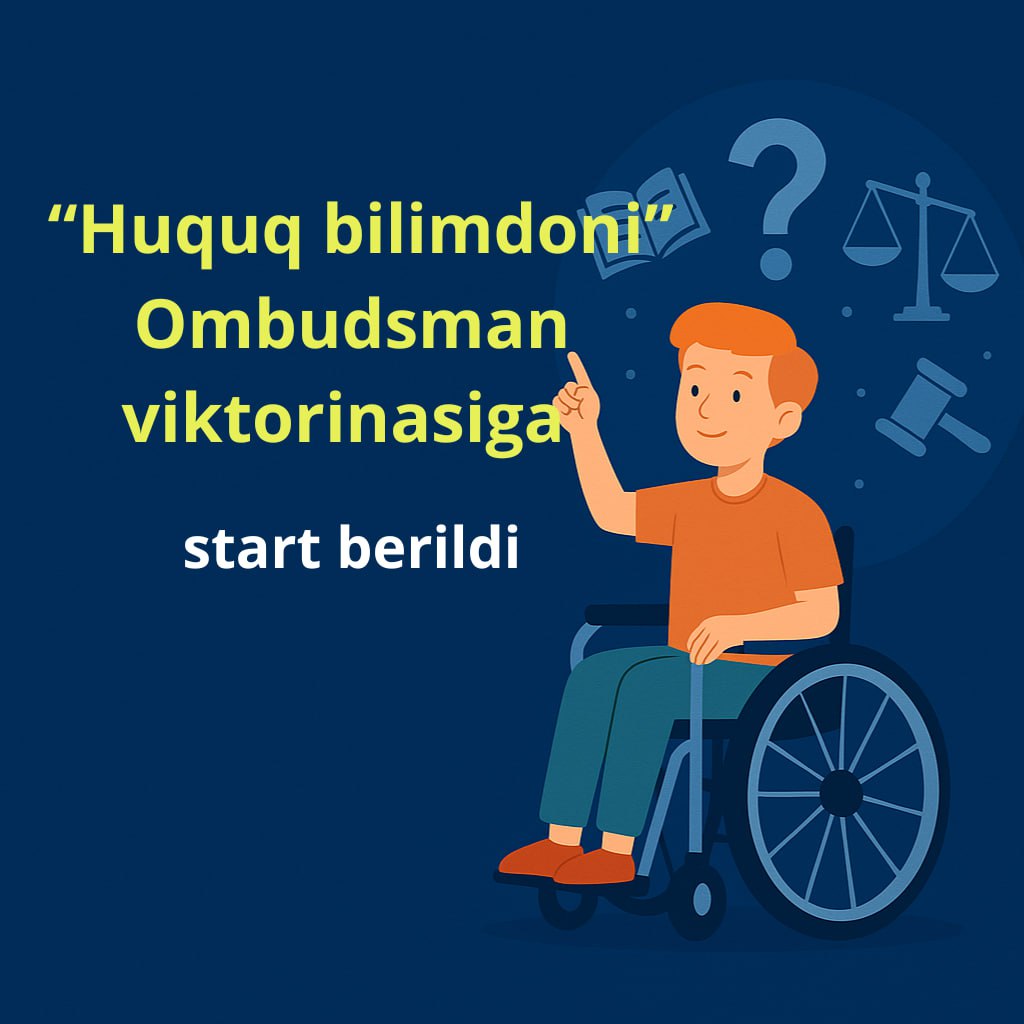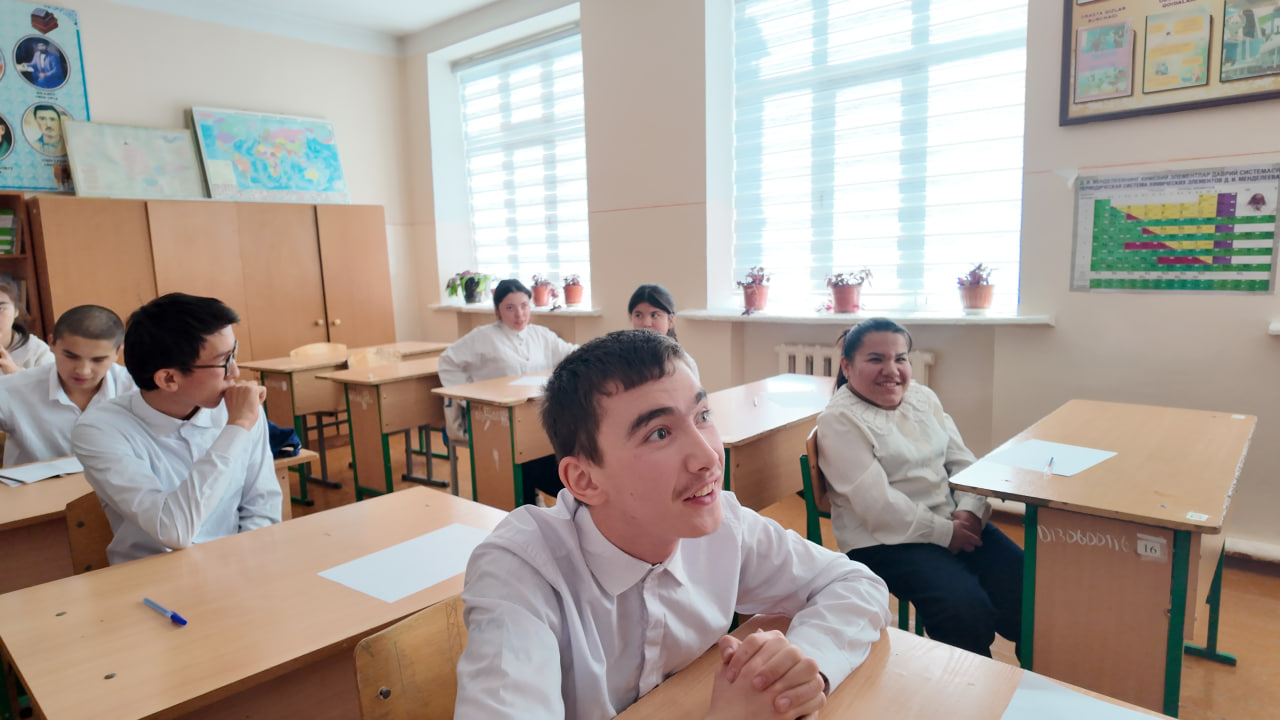Every person has the right to live in peace and security. However, cases of pressure and violence against women are increasing. Across the world, millions of women continue to face discrimination in exercising their rights. This problem negatively affects not only individuals’ private lives, but also the development of society.
According to WHO data, one in three women worldwide is subjected to physical violence by her spouse. Research shows that in 38 percent of deaths resulting from violence, the perpetrator is the victim’s husband or a person living with her in a shared household.
It is known that the Republic of Uzbekistan was among the first in Central Asia to accede, on 6 May 1995, to the UN Convention on the Elimination of All Forms of Discrimination against Women. Uzbekistan has also ratified the Maternity Protection Convention, the Discrimination (Employment and Occupation) Convention, and other international instruments.
It should be emphasized that attention to women’s rights did not stop there. Within a short period, a national legal framework consistent with international standards in this field was formed. In particular, over the past five years more than 80 normative legal acts relating to this area have been adopted. These include the important laws “On Guarantees of Equal Rights and Opportunities for Women and Men” and “On Protection of Women from Harassment and Violence.”
In addition, the adoption of the Gender Strategy through 2030, and the vigorous efforts to introduce it across all sectors and branches to properly organize gender-equality policy and ensure its full implementation, deserve attention.
Furthermore, on 9 April 2025 the President signed the Law of the Republic of Uzbekistan “On Introducing Additions and Amendments to Certain Legislative Acts of the Republic of Uzbekistan in Connection with the Improvement of the System of Support for Family and Women.” By this Law, a norm was inserted into Article 40 of the Family Code stipulating that, upon the request of a person who has suffered from domestic (household) violence, the court shall not set a reconciliation period. This became an important step toward ensuring women’s rights and combating pressure and violence against them¹.
First, the introduction of this norm serves to strengthen the protection of the rights and legitimate interests of persons who have suffered from domestic violence, as well as to increase women’s agency.
Second, the norm helps prevent tragic consequences—such as suicide and premature death of women who have suffered violence—that may arise due to failure to resolve divorce matters in a timely manner.
In turn, the Ombudsman also reviews applications from women who have experienced violence and takes measures within the mandate.
According to analysis, during 2024, 409 applications reviewed by the Ombudsman concerned harassment and violence against women, interference in private life, and the humiliation of women in the family. These applications accounted for 1.9 percent of all applications and 4.3 percent of applications submitted by women.
The largest number of applications in this area came from citizens residing in Kashkadarya (76) and Surkhandarya (51) regions, as well as the city of Tashkent (59).
At the same time, it was established that analysis of applications concerning harassment and violence against women shows that the majority of incidents are domestic violence perpetrated by the woman’s husband and his family members.
As a result of reviewing applications, assistance was provided in issuing a “protection order” to 8 women. In addition, based on the Ombudsman’s requests to prosecutorial bodies under women’s applications, in 2 cases criminal cases were initiated under subparagraph “v” of part five of Article 126¹ of the Criminal Code, in 1 case under subparagraph “v” of part seven of Article 126¹, primarily under part one of Article 112, and in 1 more case under part three of Article 126¹.
Activities in this area—particularly improving legislation on women’s rights, strengthening the institutional foundations of protection of women, and raising awareness of gender equality and women’s rights—are being carried out by the Government across important tracks.
In particular, the introduction of the procedure for issuing a “protection order” to women who have suffered harassment and violence¹, as well as the pilot establishment of “family judges” in the Samarkand City Court for Civil Cases, the Namangan Inter-district Court, and the Mirzo-Ulugbek Inter-district Court for Civil Cases, merit attention.
However, there are instances where pressure and violence against women continue even after a protection order has been issued, including cases ending in death. These circumstances underscore how crucial it is to issue protection orders and to prevent and eliminate violence against women.
Turning to foreign practice, under New Zealand law, Family Courts may, upon the application of a person subjected to violence, decide to issue a Protection Order. If a case involves family violence, the judge may also decide to issue a Protection Order without an application by the person.
If the victim requires immediate protection, the judge decides to issue a Temporary Protection Order.
Under New Zealand law, non-compliance by the respondent with the requirements of a Protection Order is punishable by imprisonment for up to 3 years.
A similar norm exists in the Province of Alberta, Canada. Under the Protection Against Family Violence Act, a protection order (protection order, emergency protection order, King’s Bench protection order) is issued by the court to a person(s) who has suffered family violence. According to the Act, if the judge determines family violence during the hearing, the judge may decide to issue a protection order without an application by the victim.
Violation of the rules of a protection order may be punished as follows: for a first violation — a fine not exceeding USD 5,000 or imprisonment for up to 90 days; for a second violation — imprisonment from 14 days to 18 months; for a third or subsequent violation — imprisonment from 30 days to 24 months.
Given that preventing and eliminating pressure and violence against women is one of the important stages of the reforms being implemented in our country, attention should be paid to the following:
First, to introduce mandatory training courses on preparing youth for family life and, within these courses, to conduct classes on pressure and violence against women and their consequences.
To this end, it is proposed to amend the Regulation “On the Procedure for Organizing Classes at Centers for Preparing Youth for Family Life,” approved by Resolution No. 820 of the Cabinet of Ministers of the Republic of Uzbekistan dated 31 December 2020 (hereinafter — the Regulation), by changing the provision under which persons who apply for marriage registration attend voluntary training at the centers to a provision on mandatory training.
Second, to carry out systematic work on the rehabilitation of perpetrators of violence.
It should be noted that, pursuant to the Regulation “On Issuing a Protection Order to Women Who Have Suffered from Harassment and Violence, Ensuring its Execution and Conducting Monitoring,” approved by Resolution No. 3 of the Cabinet of Ministers of the Republic of Uzbekistan dated 4 April 2020, a model program has been developed for the correction (rehabilitation) of persons who have committed, or are prone to commit, violence. There is, however, no information on the effectiveness or practical application of this program. According to experts, the program is not applied in practice, and assigning its tasks to 5–6 institutions may reduce its effectiveness or fail to deliver results.
Accordingly, this correction program should be improved. In doing so, it is necessary to review the program with the participation of subject-matter specialists, taking into account advances in international practice, and to assign responsibility for conducting the program to a single state body.
In New Zealand, in many cases the court refers the respondent to an assessment and a non-violence programme. Failure to comply may result in a fine of up to 5,000 dollars or imprisonment for up to 6 months.
Moreover, in Australia, the National Plan to End Violence against Women and Children 2022–2032 was announced in October 2022. This plan encompasses preventing violence, identifying those at heightened risk, assisting victims of violence, holding perpetrators accountable, and measures for the rehabilitation of participants in violence.
Australia also has Men’s Behavior Change Programs (MBCP) established to combat violence. These programs work with men to ensure they acknowledge their violent conduct and to develop strategies to stop using violence.
Within the program, men receive psychological assistance, and through trainings they are taught strategies to cease the use of violence.
In the State of Illinois (USA), the Center for Prevention of Abuse operates. This center assists not only victims, but also those who have committed violence.
The center’s Partner Abuse Intervention Program provides a 26-week course for participants in violence (men and women).
During the program, perpetrators are taught to abandon violence by acknowledging what they have done, refraining from blaming others for their own actions, understanding the consequences of their conduct, maintaining respect for their partner, offering support, and productively responding to the partner’s complaints.
As can be seen, in a number of countries, reducing and combating family violence involves not only supporting victims, but also rehabilitating perpetrators, working with them through special trainings and programs.
Third, in urgent cases of domestic violence, it is recommended to develop a mobile application for rapid response and integrate it into the software systems of security (guard) services.
Importantly, in this case a completely autonomous new mobile application may be created, or the application may be integrated into the existing software systems of guard services.
By introducing a “distress call/signal” function in the mobile application, it should be ensured that, when this function is used, personnel of guard services arrive at the residence (via geolocation data) of the victim or potential victim of domestic violence.
It should be noted that, based on the information available to employees of the Committee on Family and Women operating in neighborhood citizens’ assemblies at the district level, in the interests of the rights and interests of women in problem families, it is necessary to promote downloading and create opportunities for the use of this mobile application by these employees.
The introduction of the mobile application will help reduce cases of domestic violence in the future.
It should also be borne in mind that at the time domestic violence is being perpetrated, the victim may not have an opportunity to call existing hotlines or the internal affairs bodies, and the act of violence against the potential victim may be carried through to completion. As a result, instead of preventing violence, one has to deal with its consequences. The mobile application will help eliminate such risks.
Fourth, it is recommended to organize short courses aimed at preventing harassment and violence against women for university students.
In the United Kingdom, London Metropolitan University offers short courses for master’s students titled “Violence Against Women: Issues, Research and Policy.” These courses are intended for those working as policymakers or in specialized services for women and children who have experienced violence at the local, regional or national levels, as well as those intending to work in these areas.
At the Australian National University, there is a course for master’s students titled “Violence Against Women in Australia, Asia and the Pacific.” This course examines the diversity, scale, and nature of violence and reviews theoretical explanations for its causes. Focusing particularly on violence against women in Australia, Asia, and the Pacific, it analyzes methods for addressing individual and collective violence and aggression. The course emphasizes four core approaches—law, health, criminal justice, and regulation. At the same time, it is recommended to develop and conduct a special training program with sector experts for staff of state bodies and organizations that handle cases related to domestic violence and harassment of women, in order to enhance their practical skills.
Uppsala University (Sweden) offers an Online Course on Violence. The course is aimed at improving the qualifications of professionals who, in the course of their work, encounter women and children who have experienced violence or those who have perpetrated it. The course is intended for social workers, but can also be used by personnel in other fields, such as health, education, or law.
Barno Bobomurodova,
staff member of the Office of the Commissioner of the Oliy Majlis for Human Rights (Ombudsman)
Sukhrobjon Mamajonov,
staff member of the Office of the Commissioner of the Oliy Majlis for Human Rights (Ombudsman)
























